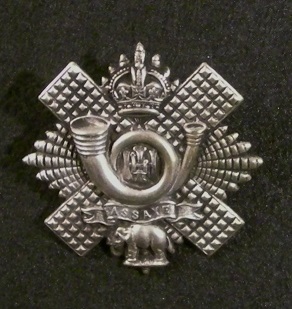
Wäinö Valdemar Aaltonen was a Finnish artist and sculptor. The Chambers Biographical Dictionary describes him as "one of the leading Finnish sculptors".

Gillespie, Kidd & Coia were a Scottish architectural firm famous for their application of modernism in churches and universities, as well as at St Peter's Seminary in Cardross. Though founded in 1927, it is for their work in the post-war period that they are best known. The firm was wound up in 1987.

Sir William Reid Dick (1879–1961) was a Scottish sculptor known for his innovative stylisation of form in his monument sculptures and simplicity in his portraits. He became an Associate of the Royal Academy in 1921, and a Royal Academician in 1928. Dick served as president of the Royal Society of British Sculptors from 1933 to 1938. He was knighted by King George V in 1935. He was Sculptor in Ordinary for Scotland to King George VI from 1938 until his death.

Benno Schotz was an Estonian-born Scottish sculptor, and one of twentieth century Scotland's leading artists.

Sir Robert Stodart Lorimer, KBE was a prolific Scottish architect and furniture designer noted for his sensitive restorations of historic houses and castles, for new work in Scots Baronial and Gothic Revival styles, and for promotion of the Arts and Crafts movement.
Alexander Carrick was a Scottish sculptor. He was one of Scotland's leading monumental sculptors of the early part of the 20th century. He was responsible for many architectural and ecclesiastical works as well as many war memorials executed in the period following World War I. As head of sculpture at Edinburgh College of Art, and as a leading member of the Royal Scottish Academy, had a lasting influence on Scottish sculpture.

Walker Kirtland Hancock was an American sculptor and teacher. He created notable monumental sculptures, including the Pennsylvania Railroad World War II Memorial (1950–52) at 30th Street Station in Philadelphia, Pennsylvania, and the World War I Soldiers' Memorial (1936–38) in St. Louis, Missouri. He made major additions to the National Cathedral in Washington, DC, including Christ in Majesty (1972), the bas relief over the High Altar. Works by him are at the United States Military Academy, the Library of Congress, the United States Supreme Court Building, and the United States Capitol.

Ferdinand Victor Blundstone (1882–1951) was a Swiss-born sculptor who worked in England. His father was Charles Blundstone, an India rubber merchant who was born in Manchester, England. He studied at the South London Technical Art School and Royal Academy Schools.

William Lamb was a Scottish sculptor and artist. He was a survivor of the "lost generation" who came of age in 1914, and was scarred, both mentally and physically, by the First World War.

John RhindARSA (1828–1892) was a Scottish sculptor, based in Edinburgh. He was born in Banff the son of a master mason. He was trained under Alexander Handyside Ritchie (1804–1870). He was master of the masonic lodge on Hill Street in Edinburgh from 1864 to 1868.
Glasgow Art Club is a club for practising and retired artists and lay members with an interest in the arts, that has become over the generations “a meeting place for artists, business leaders and academics.”

Charles d’Orville Pilkington Jackson ARSA, FRBS, FRSA was a British sculptor prominent in Scotland in the 20th Century. Throughout his career he worked closely with the architect Sir Robert Lorimer. He is most noteworthy for his creation of one of Scotland’s iconic landmarks, which appears in much promotional material about Scotland: the statue of Robert the Bruce at Bannockburn.
John Marshall (1888–1952) was a Scottish sculptor active in the early 20th century. He is noted for doing much of his architectural work in-situ, on the face of the buildings.
Robert Sivell (1888–1958) was a British portrait artist, active in the first half of the 20th century.

John Keppie was a Glasgow architect and artist. From an early age he was a close friend of Edward Atkinson Hornel and would often bring in New Year with him in Kirkcudbright. Within the architectural profession, he was closest to John Archibald Campbell, and is credited with training Charles Rennie Mackintosh.
Ethel Rhind was an Irish stained-glass and mosaic artist, and was associated with An Túr Gloine.
Alfred Ernest Child (1875-1939) was an English stained glass artist, a lecturer in the Dublin Metropolitan School of Art and was associated with An Túr Gloine.
Elizabeth Strachan Dempster, ARSA, was a Scottish sculptor.

St Columba's Church is a Roman Catholic Parish church in Woodside, Glasgow, Scotland. It was completed in 1941 and designed by Gillespie, Kidd & Coia. It is situated on Hopehill Road south west of Garscube Road. From 1965 until 2016 it was served by priests from the Dominican Order. Since 2016 it has been served by the Holy Ghost Fathers. It is a category A listed building.

Doris Kathleen Flinn was an English sculptor.
























